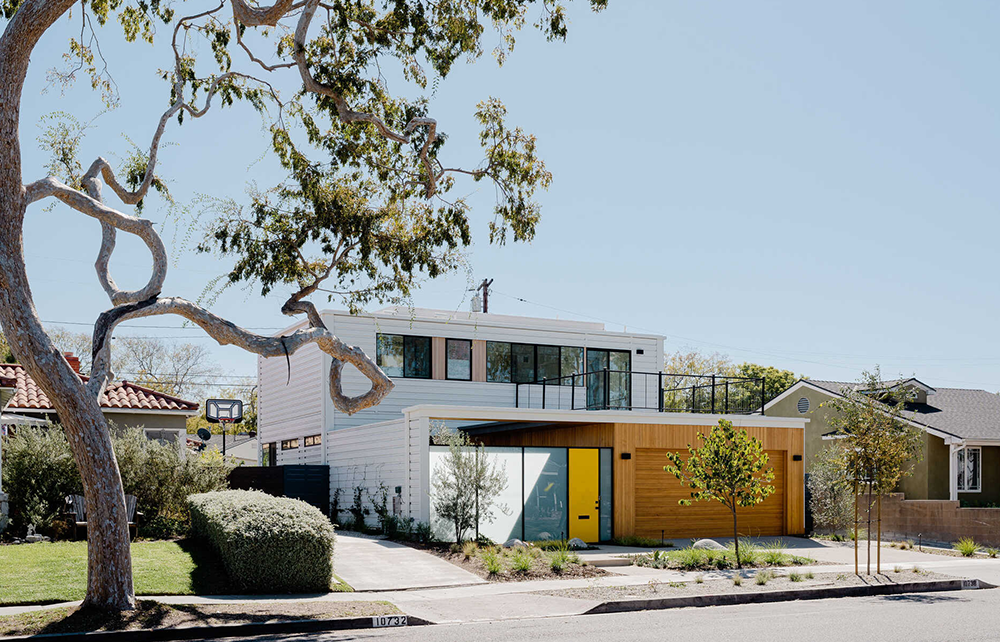

Putting the Fab in Prefab: The Next Generation of Housing Has Arrived

The future of housing just might be prefab. Founded in 2013, Connect Homes builds, delivers and installs prefabricated houses that produce less waste, use sustainably-minded materials and cut construction costs for homebuyers. Plus, unlike traditional home construction, the price of each home’s design, creation and delivery is shown upfront, along with a sharp timeline—8-20 months, from initial creation to site installation.
“Since our inception, we've thought about ourselves as the future of residential housing,” says Chief Brand Officer, Webb Blevins. ”I think we're starting to realize now that the forces of the day—the cost of labor, goods, everything that goes into building a home—are all lining up in our favor. I do feel it's our moment, both to serve single-family homeowners and developers.”
Clients choose from 15 styles of contemporary homes, which range in size from one to four bedrooms and 460 to 3,200 square feet. While Connect Homes has an array of interior materials for clients to choose from, special requests are also permitted (impacting bottom-line costs accordingly). All designs are manufactured in San Bernardino, California, and can be shipped anywhere in the country using standard shipping networks and rail transit—another cost saver. While Connect Homes is presently focused on Northern and Southern California markets, national expansion is on the horizon.
“No matter what a buyer can afford, we want to deliver something spectacular that’s made using this improved process, which is so much better for the environment and so much less expensive for the client,” says Connect Homes Co-Founder, Gordon Stott.
Investors are also seeing the potential in Connect Homes’ approach, with Brick & Mortar Ventures and Virgo Investment Group investing $10.8M in 2019.
In addition to buyers seeking a customized creation, completed Connect Homes are also proving desirable in the marketplace. The Agency's Josh Myler recently sold 10738 Franklin Avenue, a “6T” style Connect Home in Culver City. “Everybody who came through the house realized that it was both unique and amazing,” says Josh. “The feeling of the house and its spaces were so compelling. People were willing to pay more—to the tune of $1,400 a square foot, which was a record-setter in not only that particular enclave of Culver City but all of Culver City.”
Read on for more insight from Connect Homes’ Co-Founder Gordon Stott and Chief Brand Officer, Webb Blevins.
What are some ways Connect Homes are more “green” than a traditionally built home?
Gordon: Our houses are very close to being NZE—Net Zero Energy homes, which is very exciting for us. To achieve this and create a compelling green package, we offer things like housewide energy recovery ventilator (ERV) systems standard. We also use Low-E glass and low-flow fixtures. But ultimately the real savings both for the environment and the client is the fact that we're doing assembly line manufacturing, which reduces excess on multiple levels.
What do you think clients appreciate most about Connect Homes’ buying and building process?
Gordon: The thing that I think clients appreciate most is the transparency and visibility into the numbers. What we've unlocked at Connect Homes is the ability to customize a standard home to its site. We let clients specify materials and appliances and fixtures. But the real power of our system and the customization is that you can open up any of the perimeter walls of a home’s floor-to-ceiling glass to really connect to your unique site. I think the fundamental ingredient in all good modern residential design is that it connects with its site in a very specific way. And these homes achieve that.
What, in your experience, surprises clients most about a Connect Home?
Gordon: Oftentimes the responses are, "I can't believe how solid this feels.” Or “I can't believe it was once in pieces.” And “There's no evidence that this is prefab."
Webb: People just rave about these homes—our customers are our best salespeople for sure.
What excites you most when you think about the future of Connect Homes?
Webb: Connect Homes is the future of housing, today. This is our “sea change moment” when modular becomes mainstream, and helps us solve the housing shortage, labor shortage and environmentally unfriendly and antiquated building practices. Realizing our future vision will help us work to solve single-family housing needs, the needs of multi-unit housing with developer partners, as well as transitional housing needs for municipalities.
Gordon: The most exciting part of what we do is that all of it – expanding to new markets, improving homes and their production for the environment, changing people’s view of prefab, reducing the cost of building homes – it’s all part of the single goal we’re relentlessly pursuing: How do we turn modern residential architecture into a product that more people can afford, and how do we “productize” the home building process? We do this through the deployment of a well-thought-out prefab platform that’s continuously improved through end-to-end ownership of a highly complex process. This is unique in our industry. So in a way, what makes us most excited about our future is the continuous product/process/platform improvements we are undertaking right now. Again, it may not be until one understands the limitations of our industry and the complexity of a traditional architectural process and/or experiences it firsthand that this answer starts sounding sexy.
For more information on Connect Homes, visit their website, Connect-Homes.com.